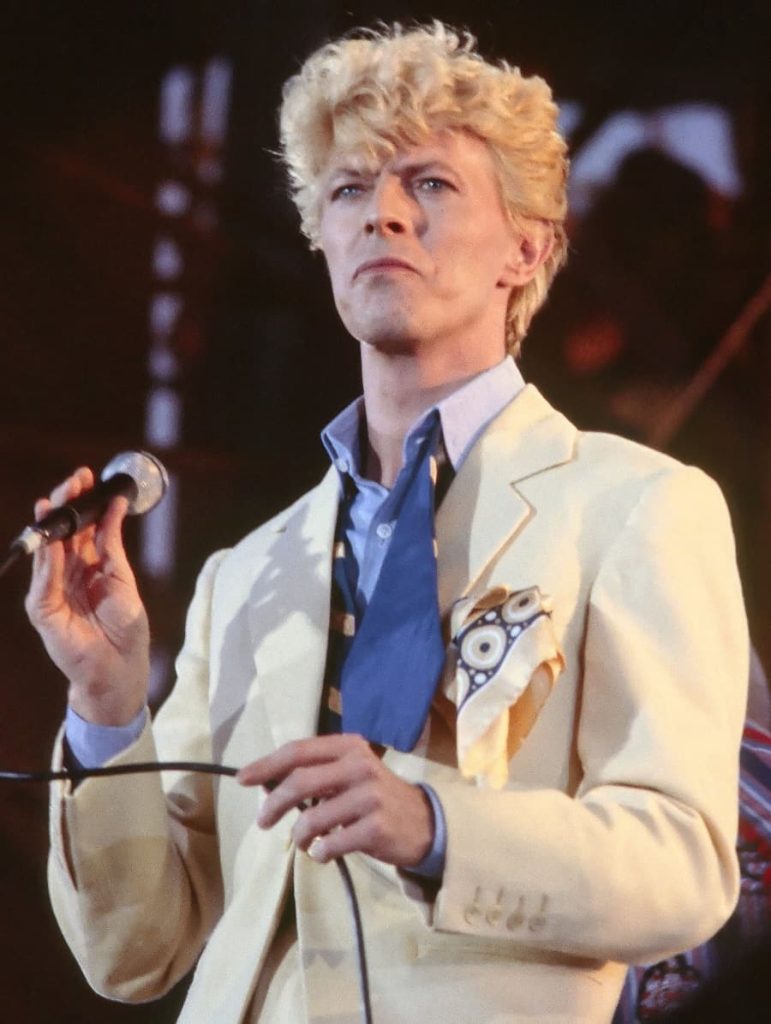
An Irresistible Beat Under the “Serious Moonlight”: Remembering David Bowie’s Dance Floor Anthem, “Let’s Dance”
In the shimmering spring of 1983, just as the world was awakening with new energy, an invitation arrived, irresistible in its rhythm and undeniably cool in its delivery. David Bowie, the ever-evolving chameleon of rock, extended his hand with “Let’s Dance”, a track that not only topped charts across the globe, reaching number 1 in the UK and the US Billboard Hot 100, but also became his biggest-selling single, embedding itself firmly in the soundtrack of a generation. This wasn’t just a song; it was a cultural moment, a vibrant step into a brighter, more accessible sound for an artist who had always danced to the beat of his own drum.
The story behind “Let’s Dance” is as intriguing as the man himself. After a period of relative quiet following the critically acclaimed “Scary Monsters (and Super Creeps)” in 1980, Bowie was seeking a fresh direction, a sound that would resonate with a broader audience. He found the perfect collaborator in Nile Rodgers of the legendary band Chic. Their meeting in a New York nightclub sparked a creative partnership that would redefine Bowie’s sound for the early 80s. Bowie presented Rodgers with a simple, folk-like demo of “Let’s Dance”, played on a twelve-string acoustic guitar with only six strings. It was Rodgers’ genius arrangement, injecting the infectious energy of post-disco and funk, that transformed the song into the dance-rock anthem we remember so vividly. Recorded swiftly in December 1982 at the Power Station in New York City, the track featured not only musicians from Chic but also the then-unknown blues guitar virtuoso Stevie Ray Vaughan, whose searing guitar licks added a layer of unexpected grit to the polished dance groove. For the first time on one of his albums, Bowie himself focused solely on his captivating vocals, leaving the instrumental duties to this talented ensemble.
Beyond its undeniable danceability, “Let’s Dance” carried a deeper resonance. While the surface might seem like a straightforward call to the dance floor, the lyrics hint at a more nuanced meaning. Some interpretations suggest the “dance” referred to is the dance of life itself, the pretenses and performances we all engage in. The line “Put on your red shoes and dance the blues” could be seen as an instruction to embrace even the difficult aspects of life with a sense of rhythm and style. The recurring plea, “Let’s dance, for fear your grace should fall,” introduces an element of urgency, a sense that the moment, and perhaps the connection between two people, is fleeting and should be seized. The “serious moonlight” under which this dance unfolds adds a touch of romanticism and perhaps a hint of melancholy, suggesting a deeper emotional undercurrent beneath the shimmering surface.
The release of “Let’s Dance” on April 14, 1983, was accompanied by a groundbreaking music video filmed in Australia. Directed by David Mallet, the video was notable for its commentary on the treatment of Aboriginal Australians, using the symbolic “red shoes” to highlight their plight. This visual dimension added another layer of meaning to the song, demonstrating Bowie’s continued willingness to engage with social issues, even within the context of a seemingly lighthearted dance track.
The success of “Let’s Dance” propelled the album of the same name to massive commercial heights, reaching number one in numerous countries and becoming Bowie’s best-selling album to date. It also launched the Serious Moonlight Tour, a worldwide spectacle that captivated audiences across 15 countries with 96 performances. This tour was a significant moment in Bowie’s career, marking a shift towards larger venues and a more mainstream appeal, without sacrificing the artistic integrity that had always defined him.
Looking back at “Let’s Dance” today, it remains a vibrant and timeless piece of music. It’s a reminder of a time when pop music could be both commercially successful and artistically adventurous. The collaboration between David Bowie and Nile Rodgers created a unique alchemy, blending rock sensibilities with the infectious rhythms of dance music, resulting in a song that continues to fill dance floors and evoke a sense of joyful nostalgia. It was more than just a hit song; it was an invitation to step out, embrace the moment, and dance under the “serious moonlight,” a call that still resonates with us all these years later.